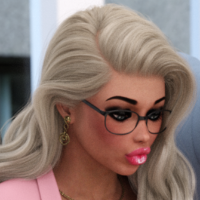Better Sound Quality on Original Run of DBZ in Japan
I've researched this more, then I drew my own conclusion from that.
I write all what I know here, but it might be hard to understand because my English sucks. I try my best.
First, for people don't know about this, here is an example. Check out these.
http://www.4shared.com/audio/PBcdSW2d/dbox1.html
http://www.4shared.com/audio/uDTVW7X0/or1.html
"dbox1.wav" is a direct DVD rip from Dragon Box. "or1.wav" is a VHS-rip sound from the original run in 1990. You know, or1.wav sounds far better than dbox1.wav. So why does that happen? The answer is simple. Fuji TV played the master audio tapes on the original run, and Toei didn't use them on the Dragon Box releases. What Toei used for DBOX is the soundtrack on film reel, which is called "optical sound", and it sounds horrible. Here is an image shows how optical soundtrack is printed on film.

It was normal to throw away master tape after printing optical soundtrack until the late '70s, because optical soundtrack is easier to broadcast and store. Every TV channel played optical sound even on original runs of anime. But in the end of the '70s, some TV channels began airing anime with master tape sound by playing the master tape itself with the film reel at once. In addition, Home video releases and video rental became common in the beginning of the '80s, which made anime production companies to store the master tapes, not to throw them away. This is why some of animated feature in the late '70s, such as the second series of Lupin III and first Gundam have the audio in very good quality.
However, sadly, since Toei Video had a negative attitude about releasing home video of TV series for children, they continued throwing away the master tapes because they were useless and voluminous. Toei Animation produces lots of anime TV series in the space of a year, and master tape, called "シネテープ (cinetape)" in Japan, is just as big as film reel. So such unused master tapes were just cumbersome for Toei.
Cinetape

Graphic Explanation

Some series released on VHS or Laserdisc in those days are the exception. The prime example is Sailor Moon. Toei Video released the entire series on VHS and Laserdisc during the original run (probably because of the existence of adult nerds), so today's DVD releases still have good sounds. Another example is movie. Toei Video released every anime movie including Dragon Ball series. That made them to keep the audio masters, so Dragon Box: The Movies and single movie releases have the amazing audio.
This theory can explain why FUNi's DB movie releases have bad Japanese audio track. They have access to only optical soundtrack printed on film reel, so it sounds as bad as the DBOX TV series.
In conclusion, the master audio tapes were probably thrown away, and do not exist now, so Toei and Pony Canyon had to use the optical soundtrack. This is why the DVD releases of TV series sound worse than the original run and movies.
Now, let's move on to GT. Things are different in GT. In the middle of the '90, Toei Animation began using D2 video tape. Some TV stations still have those D2 tapes, so even reruns of GT on Animax nowadays sound good. There is an exmaple of it. Toei even started recording GT episodes in stereo from episode 5 (I don't know why, but it's in mono until episode 4), but DVDs sound just as bad as DB/DBZ. D2 video tapes which have digital stereo audio track still exist, but Toei didn't use them. I don't know why, but I guess they didn't want to sync the D2 audio with the remastered new footage. Toei used D2 master for GT TV special included on the special disc (Why didn't they remaster TV Special? Did Toei lose the master film?), so they must know the existence of D2 tapes itself. Toei just didn't use them for DBOX. How lazy they are..




